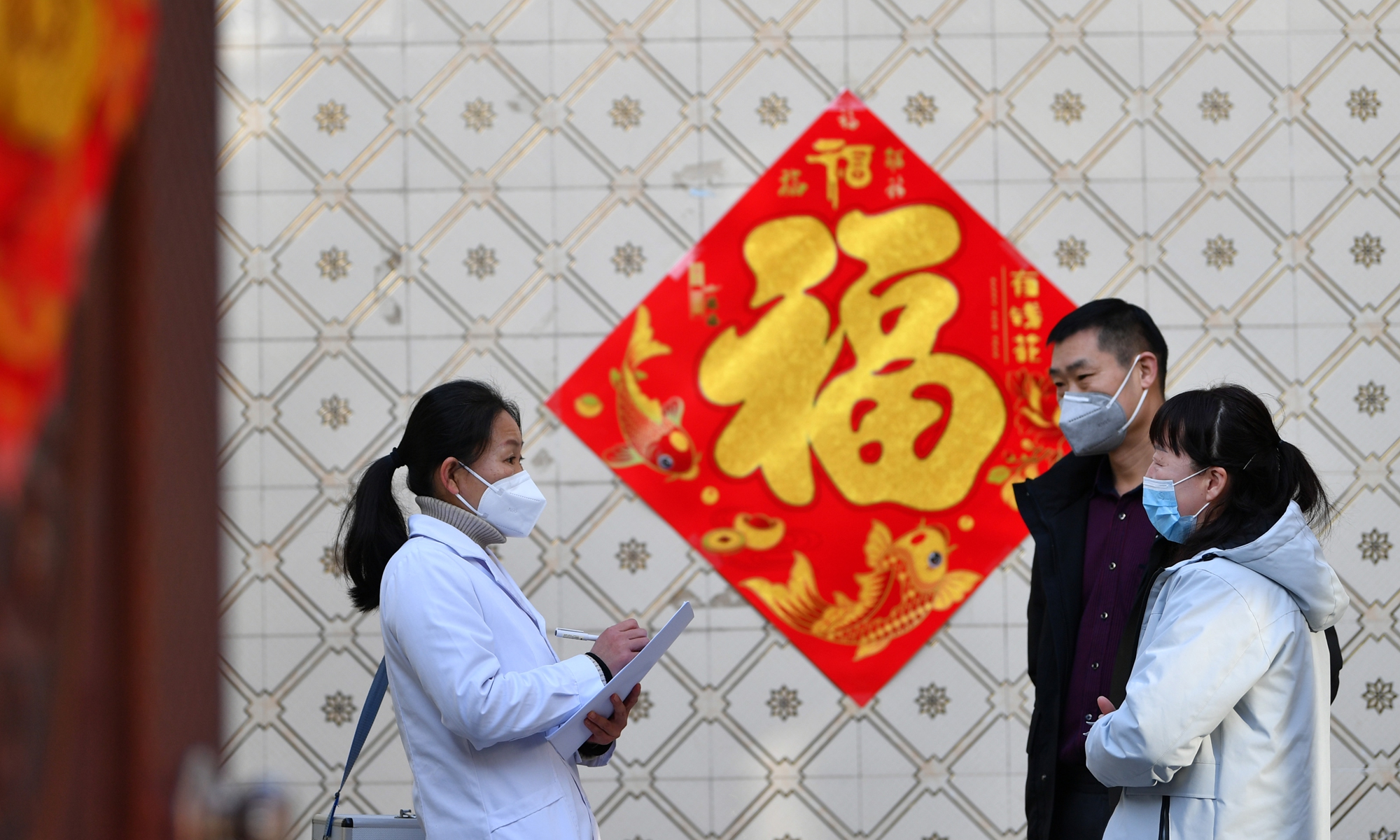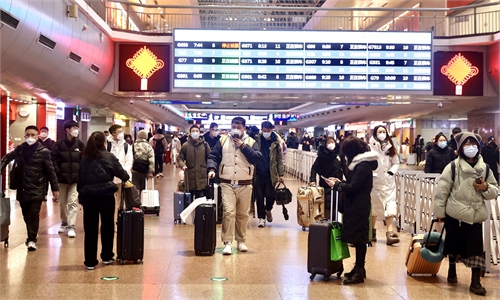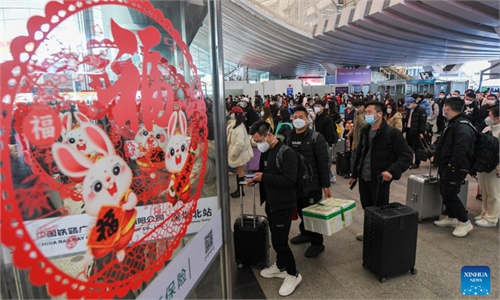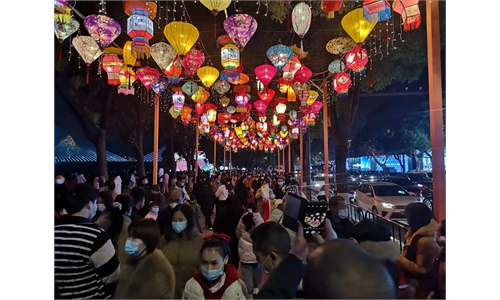China enters low COVID-19 infection period
Prevention work in rural areas remains priority; more efforts urged to protect key groups

A rural doctor follows up with residents to check their health condition in rural area of North China's Shijiazhuang on January 21, 2023. Photo: VCG
The COVID-19 epidemic in China has entered a period of low infection with new cases steadily declining, highlighting the effectiveness of prevention work after the country downgraded the management of COVID-19 from Class A to B, senior officials of the National Health Commission (NHC) said on Monday.
As the Spring Festival holidays ended, the Joint Prevention and Control Mechanism of the State Council held a press conference on Monday on the situation during the holidays. They stressed that the prevention work in vast rural areas will remain the top priority.
Fu Wei from the NHC said that since December 21, 2022, fever and general clinics in town- and community-level medical institutes have seen a decline from the previous rising trend, and the number of patients from January 21 to 27 remained at a low level.
For example, the number of patients on January 27 at general clinics in grassroots medical institutes was 44 percent of that in December 29, 2022.
Statistics offered at the Monday briefing conference were consistent with statistics that China's Center for Disease Control and Prevention (China's CDC) released in its latest issue of its academic weekly journal, which showed the recent wave of the epidemic peaked in late December 2022 and by late January 2023, the overall nationwide spread of the virus had decreased to a lower level, relieving pressure on the country's medical system.
As the national epidemic situation entered a low infection period, the prevention work in rural areas remains the top priority, said Mi Feng, spokesperson from the NHC, stressing more attention to be put on health monitoring of key groups.
Before and during the holidays, health authorities and governments at all levels attached great importance to prevention work in rural areas.
The Global Times reporters visited medical institutes in villages and counties across China during the Spring Festival holidays and learned that grassroots authorities made detailed requirements on rural and township clinics, including being equipped with at least one ambulance, and making sure that emergency calls can be received 24 hours a day to facilitate the transport of patients; and to monitor the health of the elderly with other diseases in order to offer timely treatment.
The steady, orderly work of grassroots level medical institutes was one part of China's prevention efforts during the holidays, said Mao Dezhi, an official from the Ministry of Agriculture and Rural Affairs, said at the press conference, adding that no upward trend of the epidemic emerged in rural areas during the Spring Festival holidays.
As the latest COVID-19 wave is drawing to an end, senior officials and experts of public health called for continuous efforts on prevention work in the face of possible second or more rounds of infection surges that may be caused by variants from overseas.
Given the experience of other regions and countries, there will be no wide infection after a peak for three months, but as time goes by and the efficiency of vaccines wanes, along with the appearance of new variants, a small round of infections may come again. The prevention focus would be on improving developments of related medicines and expanding productivity, Zhuang Shilihe, a Guangzhou-based medical expert, told the Global Times.
Mass vaccination is another focus for the next level of prevention work, said Zhuang, also noting the importance of fixing the shortcomings that have been exposed during the latest COVID-19 wave.
We can see from this wave that the peak came to the urban and rural areas almost simultaneously, which showed the strong infectivity of the virus and also reminded us of the necessity of adding inventories of medicines, said Zhuang.
Senior officials of the NHC also mentioned medicine inventories during the Monday press conference. For example, Fu said that since January, the medicine preparations in township- and community-level clinics have improved.
Currently, 94 percent of them have medicine stockpiles and traditional Chinese medicines for fever and cough that can be used for more than one week, and 85 percent of grassroots medical institutes have stockpiles for more than two weeks.
Some township clinics have also prepared small-molecule antiviral drugs. Moreover, to improve the ability to identify and treat infections and prevent mild illnesses from being severe, grassroots medical institutes have more than 2.89 million oximeters and 219,000 oxygen generators, according to Fu.




